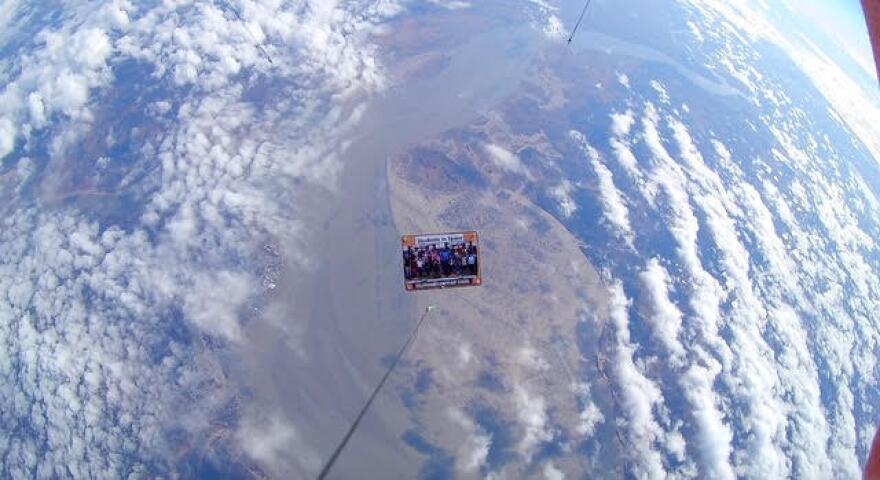Andrew Berkoski teaches his fourth grade class about space every year. This spring he led the “Kids in Space” project.
“Our kids can say they’ve been higher than just about anyone in Dillingham,” he said.
The experiment is a first for schools in Bristol Bay. The class attached three GoPro cameras to a massive, white weather balloon. The goal was to show the students what happens to an object when it is launched into space.
They also hung a class picture from it. The idea was that as the balloon went higher, the picture would put the video of earth in perspective.
The balloon rose more than 117,000 feet – almost four times higher than Mt. Everest.
“The higher up it goes, there’s less pressure so it gets bigger,” said Jens Fonkert, one of the students who participated in the experiment.
The balloon rose high enough to show the earth’s atmosphere and the curvature of the planet. The GoPros captured pictures of Dillingham from three different angles.
Fonkert said their video proves the earth is round.
“I don’t understand why people think the world is flat. We have pictures to prove that the world is round,” he said.
Another student, Katelyn Kolbe, explained what happens when the balloon rises through the atmosphere.
“It gets colder and colder, because there’s kinda like three blankets around the atmosphere," she said. "Once you go up to one, it gets colder, and we got up to the second one which it was -47 degrees.”
As the balloon rose, the pressure increased. When that pressure became too great, it exploded. The parachute then opened, and the device floated back down to earth. It landed at the foot of Warehouse Mountain.
Berkoski and his teaching partner Adam Meade tracked the balloon with a GPS signal. They hiked eight hours overnight to retrieve the balloon.
“It was not easy, to say the least," Berkoski said. "We had to snowshoe for about five miles, walk on tundra for another six, we had to cross several creeks, several rivers and then the hunt through the woods for it.”
The class collected 130 pages of weather data, including altitudes, temperatures and barometric pressures. Berkoski says they will conduct the experiment again with next year’s fourth graders.

